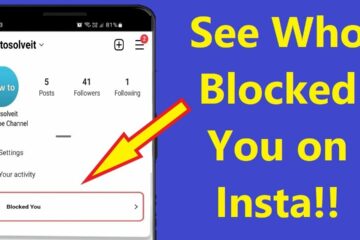The king of eCommerce, Amazon, grew exponentially in 2020, with annual revenue of $384 billion. It’s, of course, great news for founder Jeff Bezos in his mission to reach space, but it’s great news for sellers too.
The online marketplace offers a significant opportunity for sellers to promote their products and boost their sales. However, not all sellers see success on Amazon.
Much of this comes down to a lack of a viable Amazon marketing strategy. Due to the sheer competition on the site, you need to market your products well to stand out from the crowd. That’s why we’ve put together our simple guide to developing a kick-ass Amazon marketing strategy.
The Key Components of an Amazon Marketing Strategy
Amazon offers a lot of different ways to boost your products on the platform. For a comprehensive Amazon Marketing strategy, you need to ensure you’re not neglecting one area in favor of another. The four key components of advertising on Amazon are:
- SEO
- Amazon Ads (PPC)
- Affiliate marketing
- Reviews
- Social media marketing
We’ll take a look at each.
Amazon SEO
23% of consumers start their search on Amazon when they don’t have a specific product in mind to purchase. This makes it a powerful SEO tool for eCommerce businesses.
Just like you can optimize your web pages for search engines, you can (and should!) optimize your product pages on Amazon.
You can optimize your Amazon product pages by looking at:
- Product title
- Product images
- Product key features
- Product description
- Product price
Your product title should be concise, clear, and keyword-rich. It’s best practice to include the product name, brand name, and any specific features. Avoid including pricing, promotions, or phrases like “best” in the title.
Next up are your images. Your images should be high-quality and help your product stand out on the search results pages. You’re allowed up to nine different images per product, which should be at least 1,000px by 1000px.
Once a user lands on your product page, they’ll head for the key features, the list of bullet points beneath the price. This copy is your best opportunity to sell your product; it should emphasize the benefits of your product and address any common queries or misconceptions. Keep it simple and avoid wasting space on information that’s already obvious from images.
Your product description is where you can expand on your key features. Include any further benefits, USPs, and features, as well as some more images. You can use HTML markup here, so make the most of it by breaking up and formatting the text to keep it interesting.
Finally, price. Much of your pricing strategy on Amazon will be dependent on the product you’re selling and how competitive that category is. When you’re looking to break into the Amazon marketplace, it’s often a great strategy to price as low as possible before increasing.
Amazon Advertising
Once known as Amazon Marketing Services, Amazon Ads is a PPC service within the eCommerce platform. It works the same as Google Ads, so you’ll only pay when a potential buyer clicks on your ad.
There are three main types of Amazon Ads:
- Product display
- Sponsored product
- Headline search
Product display ads appear within the Amazon search results pages, along the side, or at the bottom. They can also show up on related product pages. When a user clicks this type of ad, they’re taken straight to the relevant product page.
Sponsored product ads appear in the Amazon search results pages, mixed in with the organic search results. They can also show up on product pages above the product description. Like above, users will click through to the product page.
Finally, headline search ads appear at the top of the Amazon search results pages. They’re highly customizable but can include ad copy, imagery, custom navigation, and products, as well as a branded landing page.
Amazon Affiliate Marketing
Amazon runs its own affiliate marketing program. This is where other sites, most often bloggers, link to Amazon products and make a small commission whenever a product is bought.
It’s a win-win exchange as if your sales don’t increase; you’ll not pay anything. It can also help build your brand awareness, getting your products in front of your target audience.
The Amazon Affiliate Program is free to use and can connect you with approved affiliates.
Amazon Reviews
Amazon reviews are of vital importance for sellers. Customers can’t physically see or touch the product before they purchase. This means they have to rely on the word of others to ensure they’re getting a quality product.
Your reviews dictate your conversion rate. Consumers will be far less likely to purchase from a seller with few reviews or negative reviews. Meanwhile, great reviews play a significant role in conversions.
All this to say, sellers should prioritize reviews. Set up automated follow-up emails thanking your customer for buying your product and requesting a review. Amazon also lets sellers respond to reviews, which is a great opportunity for you to thank your customers again, as well as address any issues.
Amazon Social Media
You can boost and expand your Amazon marketing efforts by tying it into your social media strategy. This isn’t to say turn your entire social media account into a promotion for your Amazon. Still, many brands in industries like fashion and beauty see great success through tying the two strategies together.
Getting Amazon Marketing Right
As you can see, there’s a lot to address in a comprehensive Amazon marketing strategy. If your business, like many eCommerce brands, has a huge list of products to sell, then selling on Amazon is a time-consuming endeavor. Not only this, but it’s so important to get it right to see success.
This is why many businesses opt to use Amazon marketing services. The best Amazon marketing services ensure your products are optimized and performing, increasing sales for your brand.
More Digital Marketing
Your Amazon marketing strategy needs to be comprehensive and address many different components to be successful. Sellers should focus on SEO, PPC, reviews, and affiliate marketing, as well as social media.


